Abstract
We measured the resistance of collateral channels, Rcol, in incomplete interlobar fissures in eight normal and eight emphysematous excised human lungs. Similar measurements were also made from the basal segments to the superior segment of the lower lobe in three normal and five emphysematous lungs. The lobe or segments were inflated through a bronchial cannula; air leaked through collateral channels and out of the other lobe or segment through a pneumotachograph which measured flow. Catheters inserted directly into the lung through the pleural surface on either side of the collateral channels measured the alveolar pressure difference producing collateral flow. Rcol is the ratio of this pressure difference to flow. By also measuring the inflating pressure and the airway pressure at the pneumotachograph, we calculated the lobar or segmental airway resistance, Raw. In the normal lungs Rcol varied inversely with lung volume and was higher on inflation than on deflation. Raw was very small compared to Rcol which ranged from 260 to 3300 cm H2O/liter per sec when the distending pressure was 20 cm H2O. In the emphysematous lungs on the other hand, Rcol was markedly decreased and ranged from 5 to 20 cm H2O/liters per sec at the same distending pressure and was less than Raw. We conclude that collateral channels are important ventilatory pathways in emphysema. When many units within a lung are ventilated by these pathways there may be disturbances of gas exchange and phase differences between normally and abnormally ventilated areas.
Full text
PDF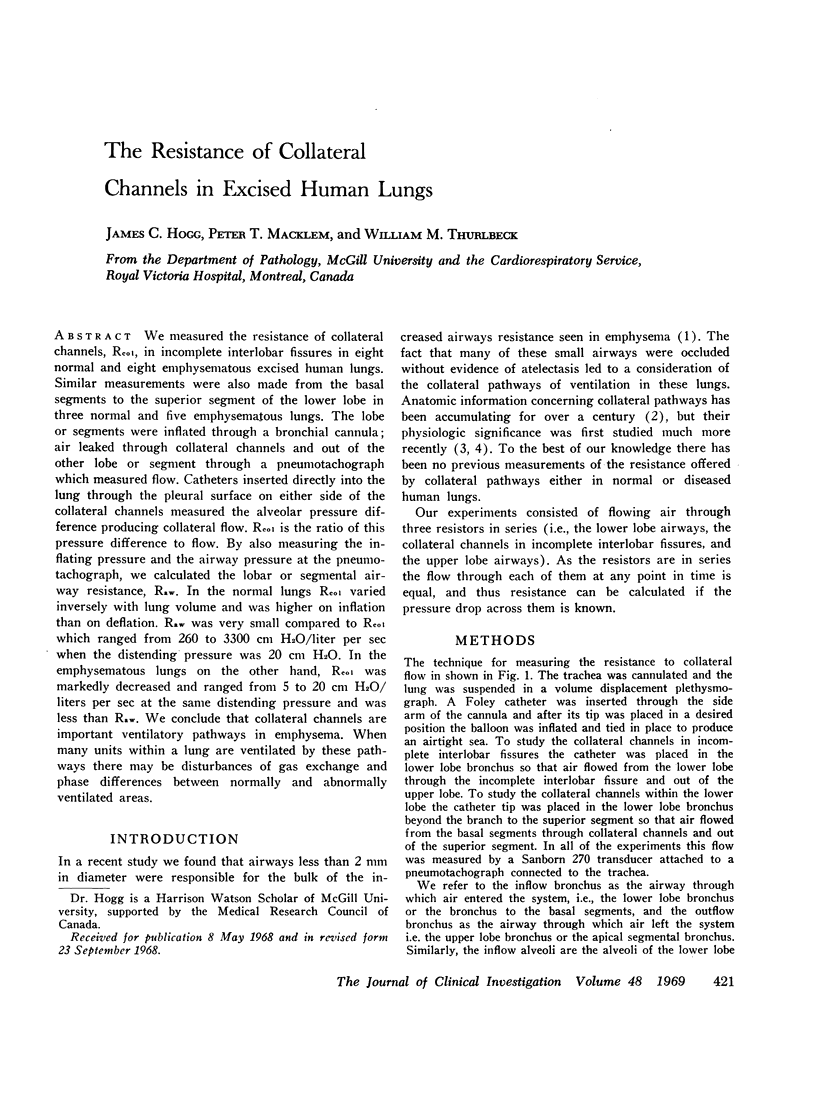
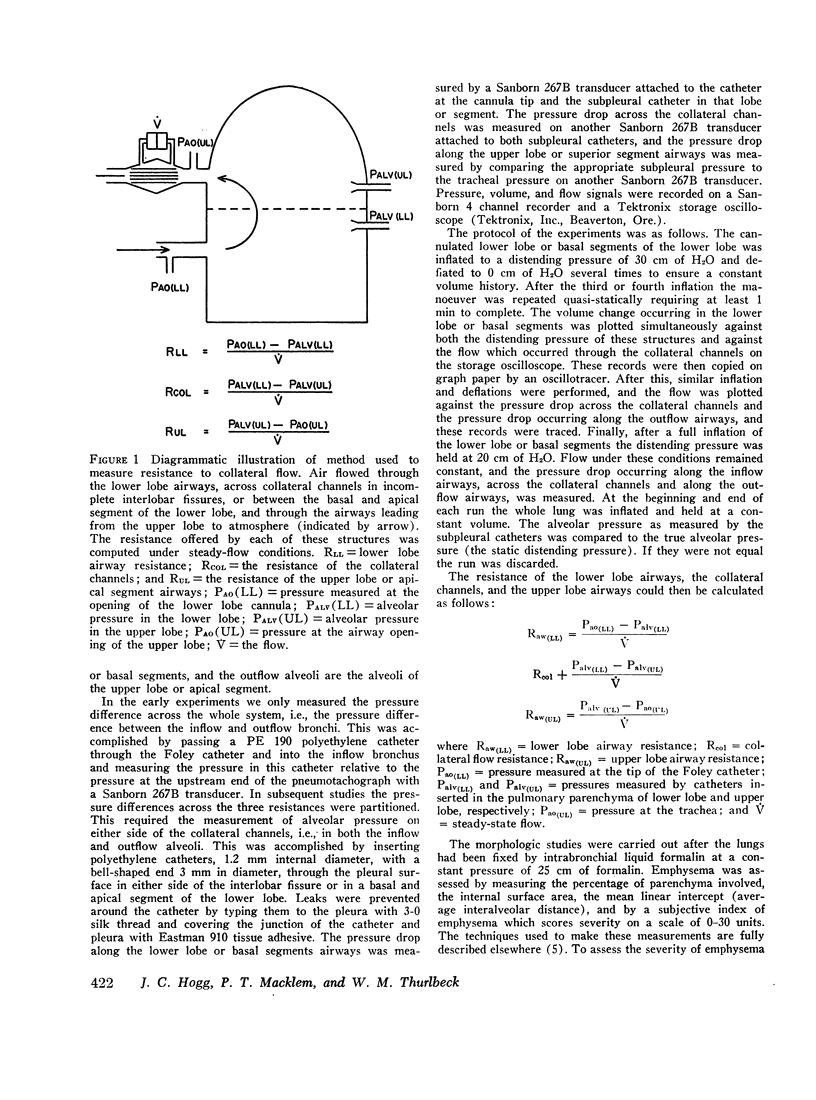
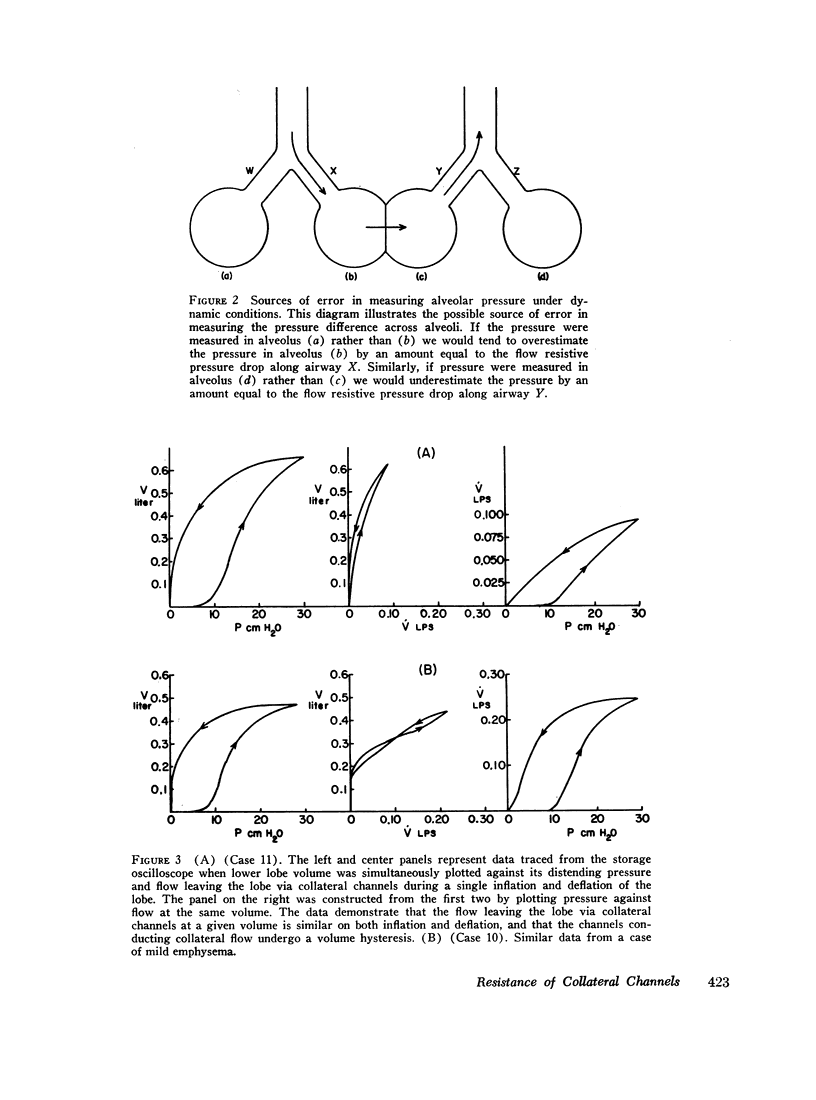
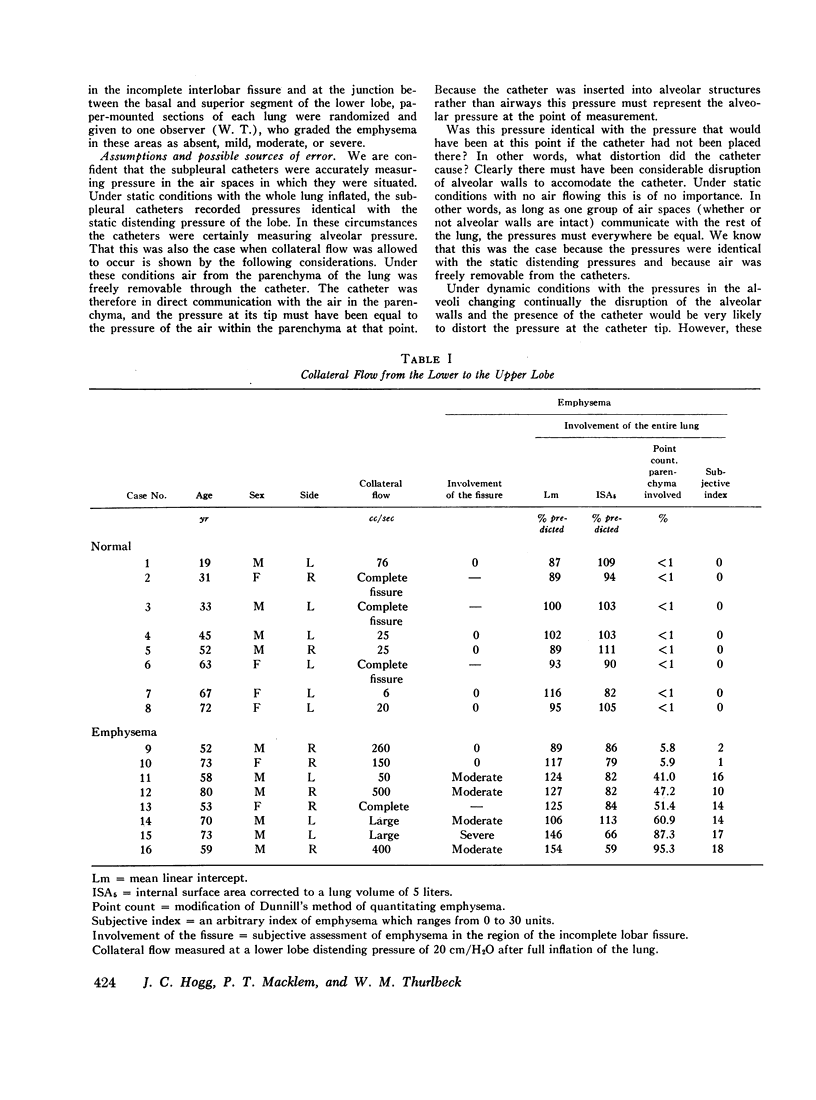
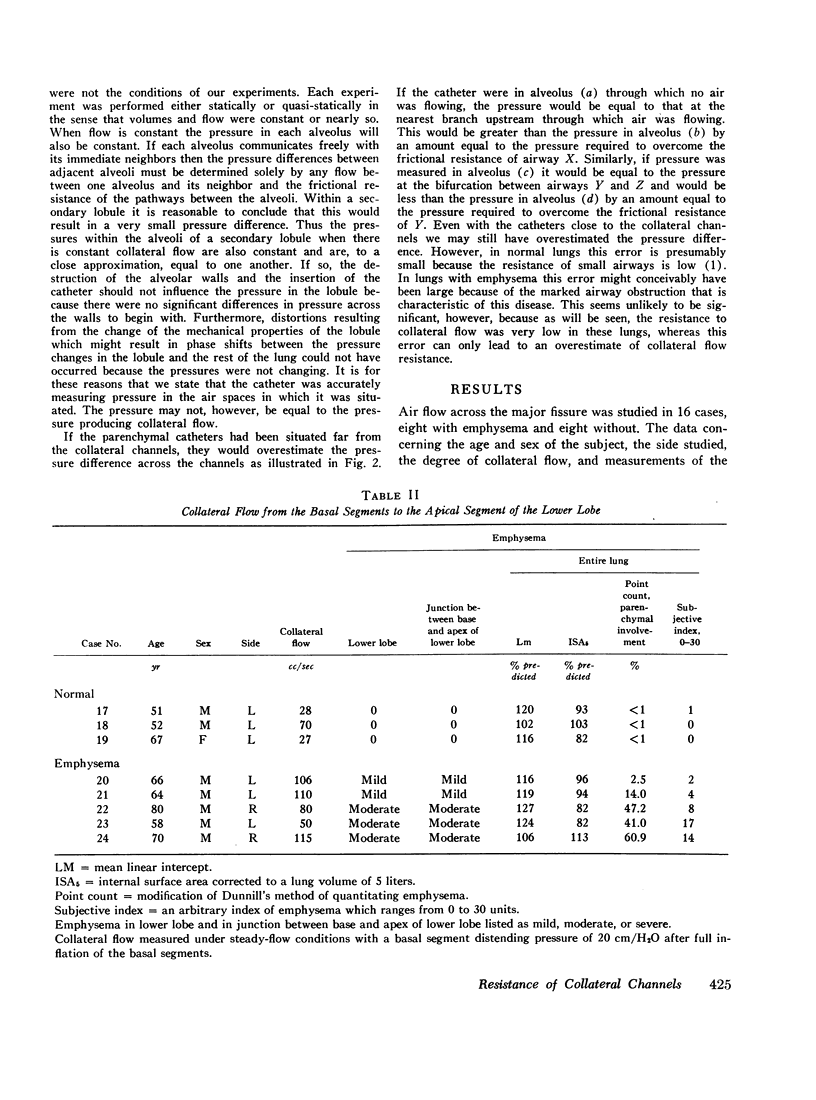
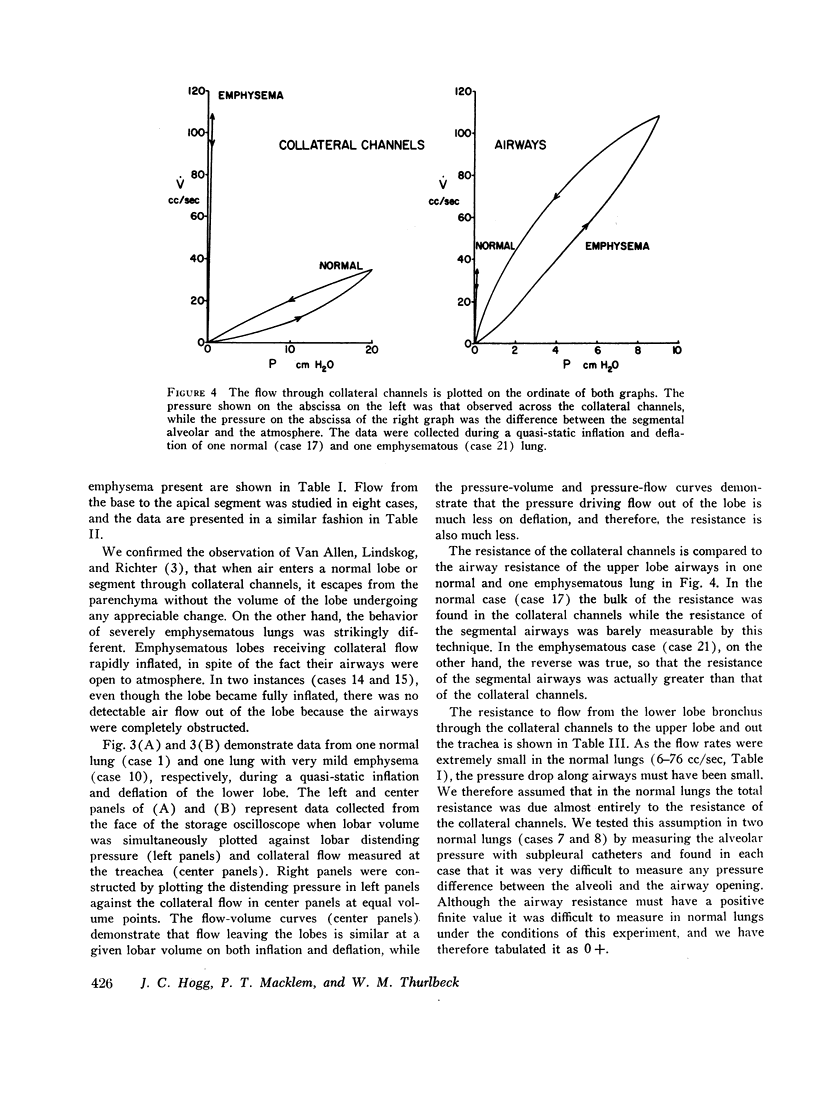
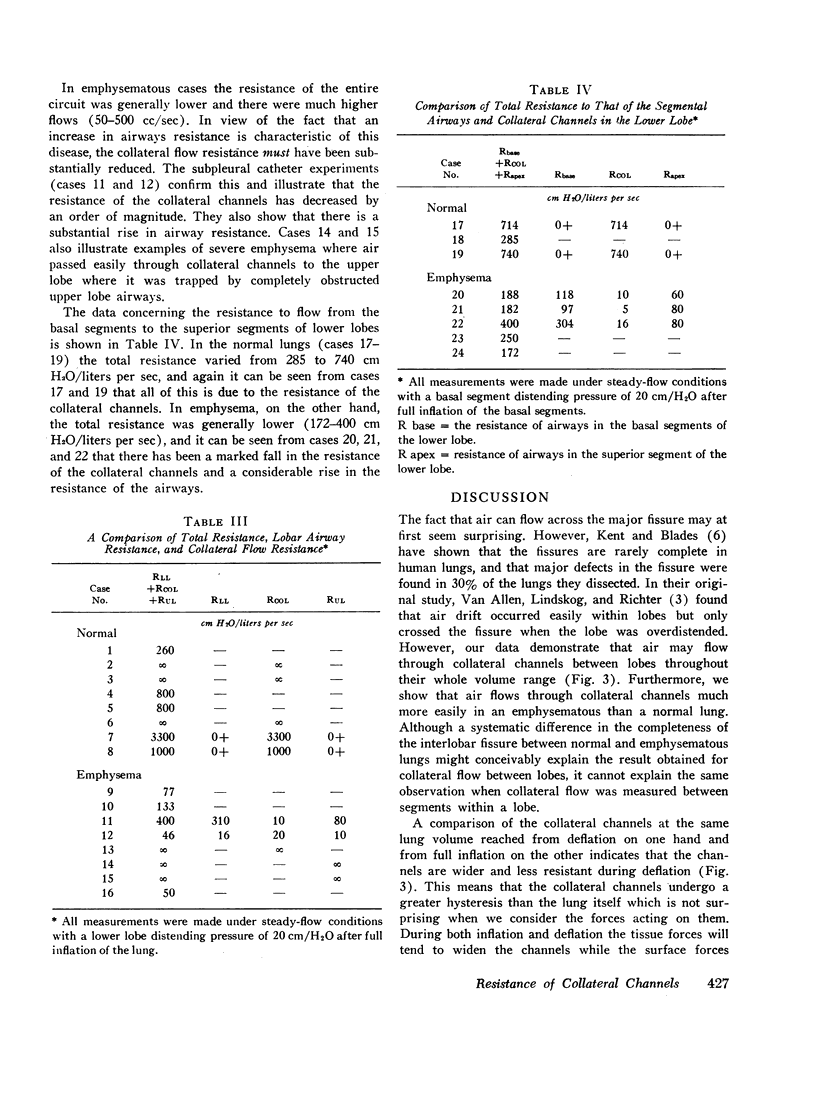
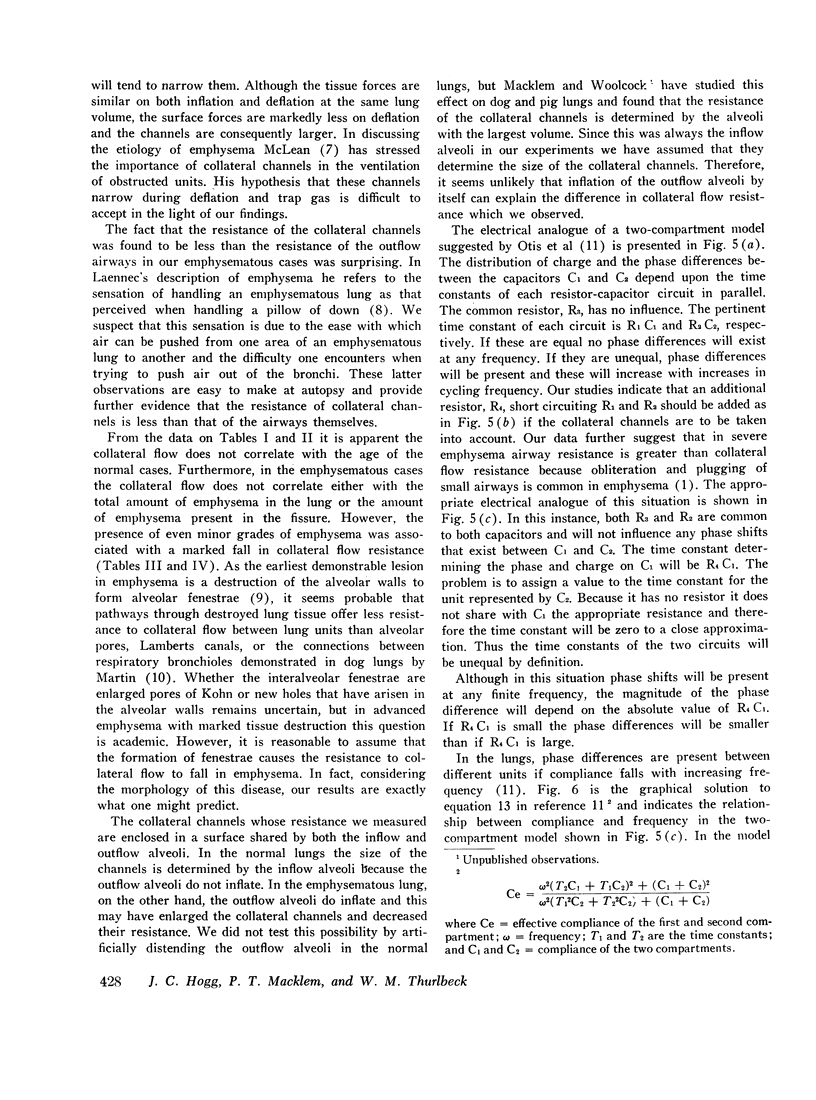
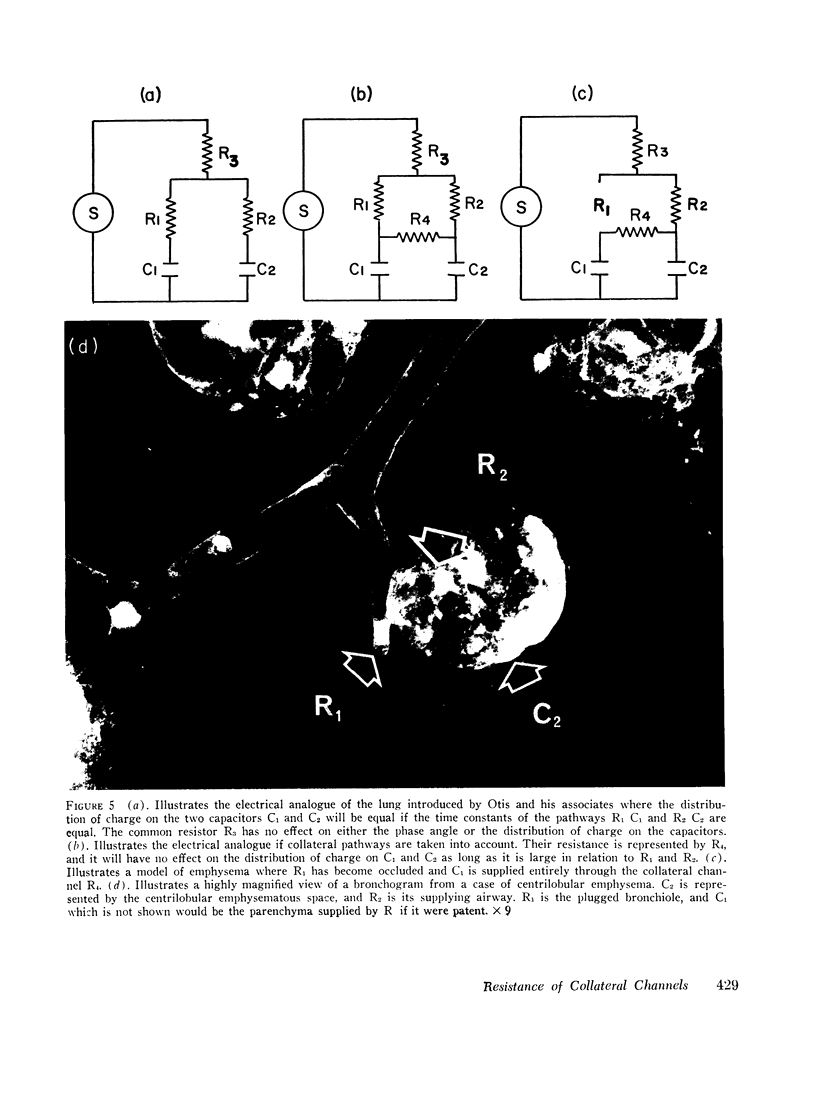
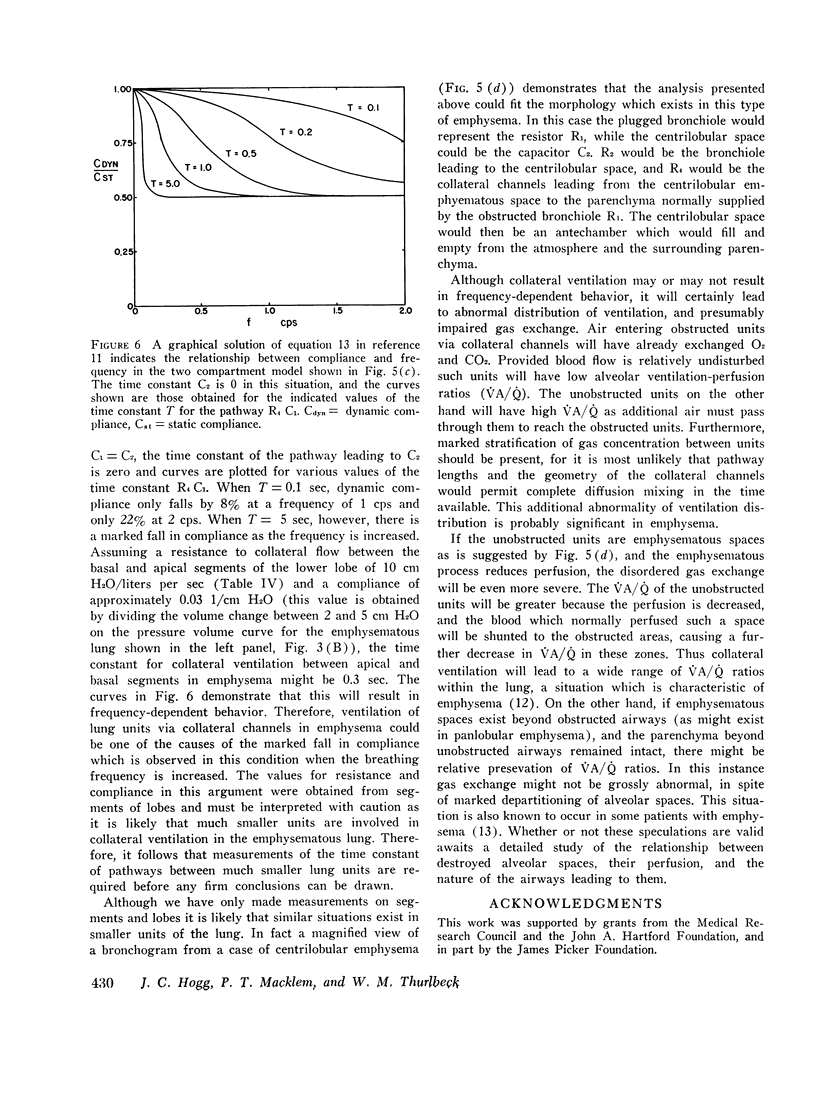
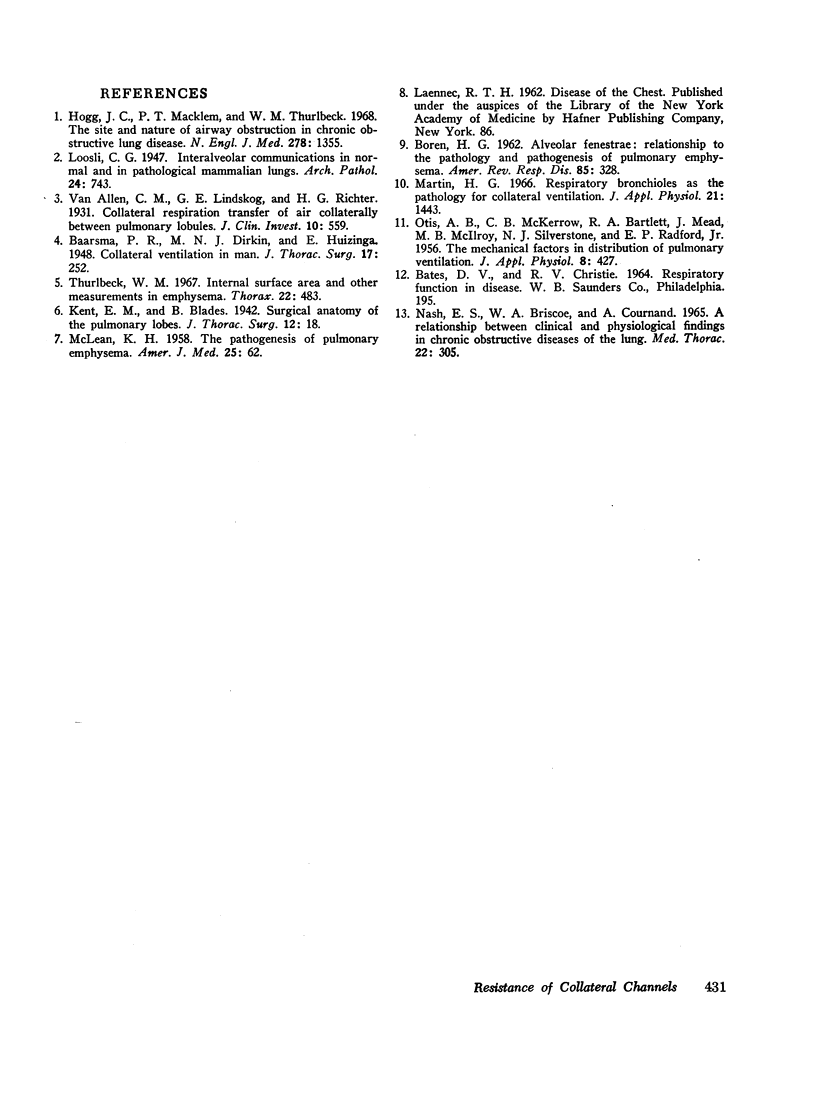
Images in this article
Selected References
These references are in PubMed. This may not be the complete list of references from this article.
- BOREN H. G. Alveolar fenestrae. Relationship to the pathology and pathogenesis of pulmonary emphysema. Am Rev Respir Dis. 1962 Mar;85:328–344. doi: 10.1164/arrd.1962.85.3.328. [DOI] [PubMed] [Google Scholar]
- Hogg J. C., Macklem P. T., Thurlbeck W. M. Site and nature of airway obstruction in chronic obstructive lung disease. N Engl J Med. 1968 Jun 20;278(25):1355–1360. doi: 10.1056/NEJM196806202782501. [DOI] [PubMed] [Google Scholar]
- Martin H. B. Respiratory bronchioles as the pathway for collateral ventilation. J Appl Physiol. 1966 Sep;21(5):1443–1447. doi: 10.1152/jappl.1966.21.5.1443. [DOI] [PubMed] [Google Scholar]
- McLEAN K. H. The pathogenesis of pulmonary emphysema. Am J Med. 1958 Jul;25(1):62–74. doi: 10.1016/0002-9343(58)90199-2. [DOI] [PubMed] [Google Scholar]
- NASH E. S., BRISCOE W. A., COURNAND A. THE RELATIONSHIP BETWEEN CLINICAL AND PHYSIOLOGICAL FINDINGS IN CHRONIC OBSTRUCTIVE DISEASE OF THE LUNGS. Med Thorac. 1965;22:305–327. [PubMed] [Google Scholar]
- OTIS A. B., MCKERROW C. B., BARTLETT R. A., MEAD J., MCILROY M. B., SELVER-STONE N. J., RADFORD E. P., Jr Mechanical factors in distribution of pulmonary ventilation. J Appl Physiol. 1956 Jan;8(4):427–443. doi: 10.1152/jappl.1956.8.4.427. [DOI] [PubMed] [Google Scholar]
- Thurlbeck W. M. Internal surface area and other measurements in emphysema. Thorax. 1967 Nov;22(6):483–496. doi: 10.1136/thx.22.6.483. [DOI] [PMC free article] [PubMed] [Google Scholar]
- Van Allen C. M., Lindskog G. E., Richter H. G. COLLATERAL RESPIRATION. TRANSFER OF AIR COLLATERALLY BETWEEN PULMONARY LOBULES. J Clin Invest. 1931 Aug;10(3):559–590. doi: 10.1172/JCI100371. [DOI] [PMC free article] [PubMed] [Google Scholar]



